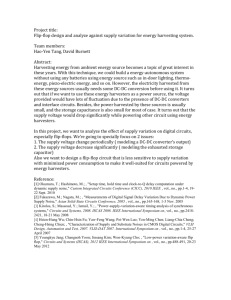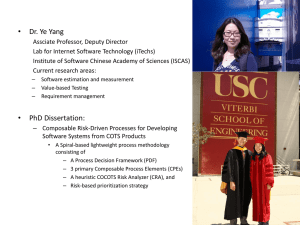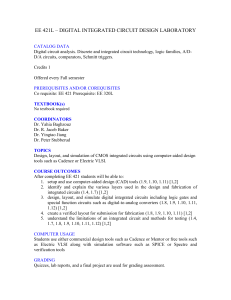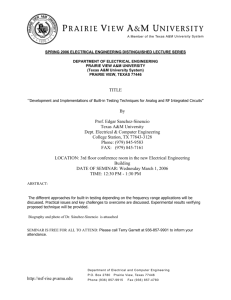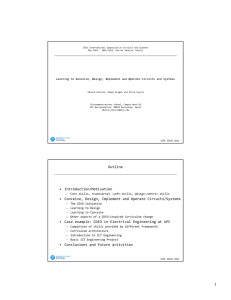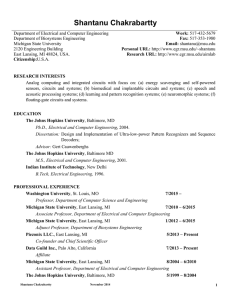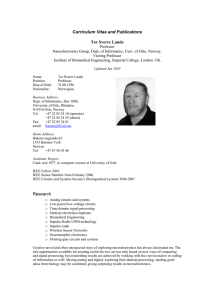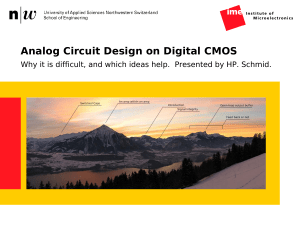International Travel Award (Faculty) Report Baris Taskin IEEE International Symposium on Circuits and Systems (ISCAS) May 2011
advertisement
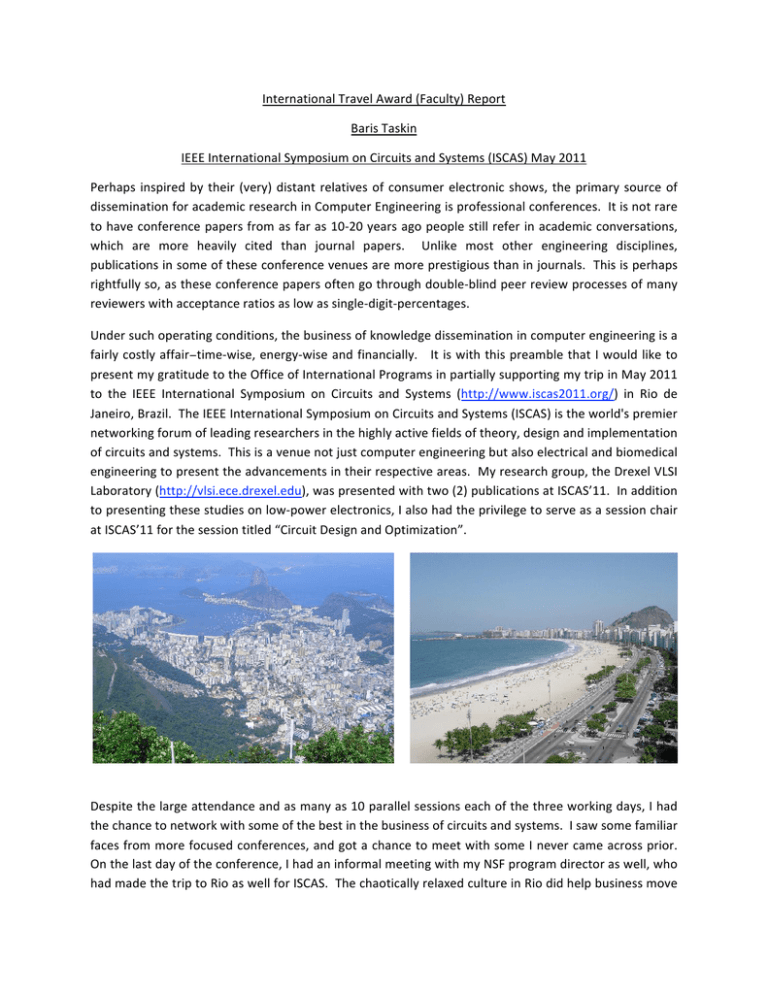
International Travel Award (Faculty) Report Baris Taskin IEEE International Symposium on Circuits and Systems (ISCAS) May 2011 Perhaps inspired by their (very) distant relatives of consumer electronic shows, the primary source of dissemination for academic research in Computer Engineering is professional conferences. It is not rare to have conference papers from as far as 10‐20 years ago people still refer in academic conversations, which are more heavily cited than journal papers. Unlike most other engineering disciplines, publications in some of these conference venues are more prestigious than in journals. This is perhaps rightfully so, as these conference papers often go through double‐blind peer review processes of many reviewers with acceptance ratios as low as single‐digit‐percentages. Under such operating conditions, the business of knowledge dissemination in computer engineering is a fairly costly affair−time‐wise, energy‐wise and financially. It is with this preamble that I would like to present my gratitude to the Office of International Programs in partially supporting my trip in May 2011 to the IEEE International Symposium on Circuits and Systems (http://www.iscas2011.org/) in Rio de Janeiro, Brazil. The IEEE International Symposium on Circuits and Systems (ISCAS) is the world's premier networking forum of leading researchers in the highly active fields of theory, design and implementation of circuits and systems. This is a venue not just computer engineering but also electrical and biomedical engineering to present the advancements in their respective areas. My research group, the Drexel VLSI Laboratory (http://vlsi.ece.drexel.edu), was presented with two (2) publications at ISCAS’11. In addition to presenting these studies on low‐power electronics, I also had the privilege to serve as a session chair at ISCAS’11 for the session titled “Circuit Design and Optimization”. Despite the large attendance and as many as 10 parallel sessions each of the three working days, I had the chance to network with some of the best in the business of circuits and systems. I saw some familiar faces from more focused conferences, and got a chance to meet with some I never came across prior. On the last day of the conference, I had an informal meeting with my NSF program director as well, who had made the trip to Rio as well for ISCAS. The chaotically relaxed culture in Rio did help business move along: One wonders what held the South American economies from picking up (as some of them rightfully did recently) for so long. My colleagues at the College of Engineering, and more so the graduate students, often contemplate about the balance between work and play. The IEEE graduate student association routinely holds panel discussions on this topic (I encourage the readers of this report to attend these meetings to see how the engineers get it done!). My motto at conferences is all work and no play due to reasons that should be clear after reading the first paragraph of this report. This becomes strikingly problematic at places such as Rio. The organization associates had proactively diagnosed this “problem” for the attendees and had planned short tours of the city to the Sugar Loaf Mountain, Christ the Redeemer statue, the Amazons, the historic city and much more. I picked the trip to the Christ the Redeemer statue and was joined by my colleague Prof. Nwankpa (ECE), who has for years attended this conference and is the track chair for power and energy systems at ISCAS in 2012. After the trip, which was on the first day of the conference on the slowest of afternoons for my computer engineering track, there was two more days of networking, learning, questioning in air‐ conditioned rooms. Below is how I managed to balance work and play during a 15‐minute break.
